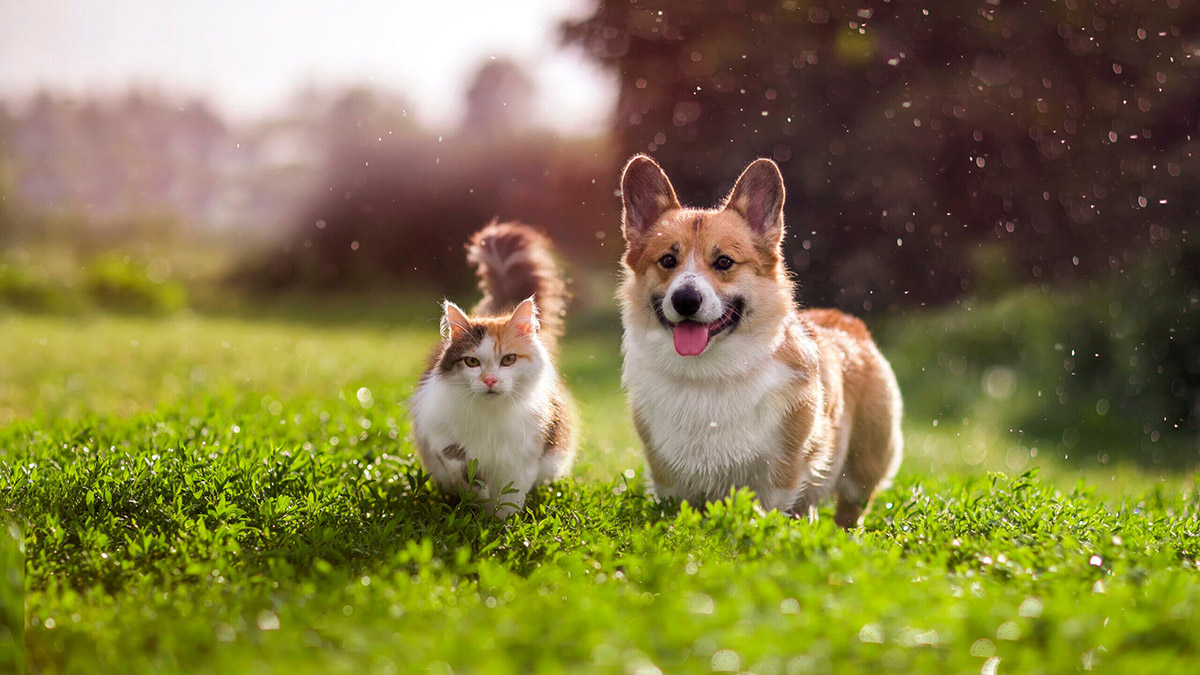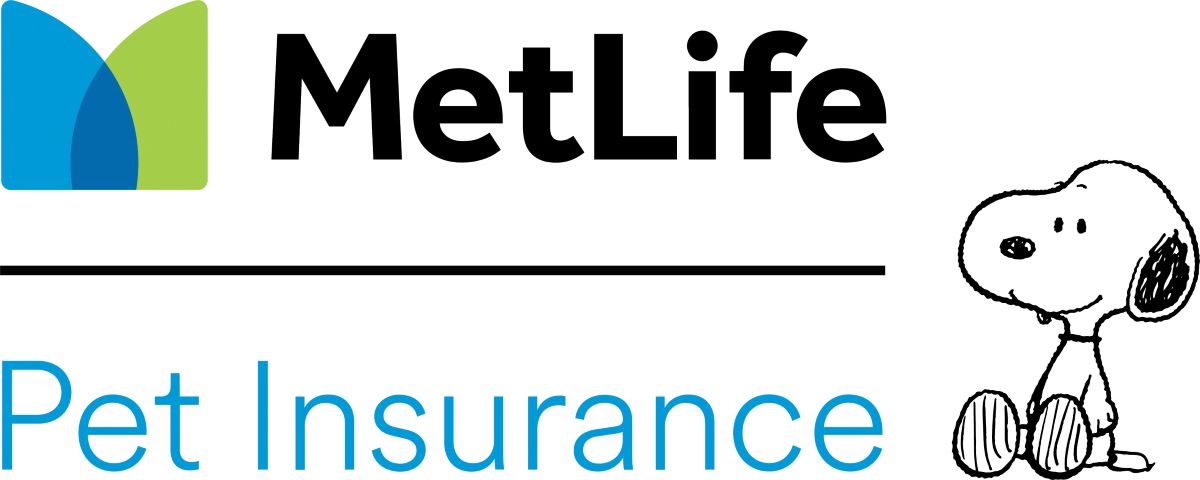

Finance
How Long Has Pet Insurance Been Around
Published: November 23, 2023
Learn how long pet insurance has been around in the finance industry and why it is important to protect your furry friend's health and your financial future.
(Many of the links in this article redirect to a specific reviewed product. Your purchase of these products through affiliate links helps to generate commission for LiveWell, at no extra cost. Learn more)
Table of Contents
Introduction
When it comes to protecting our furry friends, we often think of their health and well-being. Pet insurance has emerged as a valuable tool for pet owners seeking financial support for their pets’ medical expenses. But have you ever wondered how long pet insurance has been around?
Pet insurance, much like human health insurance, provides coverage for unexpected veterinary expenses, ensuring that your beloved pet receives the best medical care without burdening your wallet. However, the concept of pet insurance is relatively new and has experienced significant growth in recent years.
In this article, we’ll take a deep dive into the history of pet insurance, exploring its early beginnings, development, and growth, as well as the types of coverage available. We’ll also discuss the benefits of pet insurance and address some of the challenges and criticism it has faced over the years.
So, let’s embark on a journey to explore the fascinating world of pet insurance and discover how it has become an essential aspect of responsible pet ownership.
Early History of Pet Insurance
The concept of pet insurance can be traced back to the early 20th century, when the first known pet insurance policy was created in Sweden in 1890. This initial policy offered coverage for horses and livestock, specifically protecting against loss due to accident or illness.
Over the years, the idea of insuring pets began to gain traction in other parts of Europe. In 1947, the first pet insurance policy for dogs was introduced in the United Kingdom by the company known as The Animal Friends Insurance. This policy covered the cost of veterinary fees in the event of an accident or illness.
Despite these early developments, pet insurance remained relatively uncommon in other parts of the world. It wasn’t until the 1980s that companies in the United States started offering pet insurance policies. Veterinary Pet Insurance (VPI), which later became Nationwide Pet Insurance, was the first company to provide pet insurance coverage in the US. VPI began offering policies for dogs and cats, and their services quickly gained popularity.
Initially, pet insurance policies were basic and only covered accidents and illnesses. However, as the demand for comprehensive coverage grew, insurance companies began to expand their offerings. Today, pet insurance policies can cover a wide range of needs, including preventive care, wellness visits, vaccinations, and even alternative therapies.
As the pet insurance industry began to evolve, more and more companies entered the market. This increased competition led to further improvements in policy options and pricing. Nowadays, pet owners can choose from a variety of insurance providers, each offering their own unique set of coverage and benefits.
The early history of pet insurance is marked by the pioneering efforts of companies and individuals who recognized the need for financial protection for pet owners. Their determination and innovation laid the groundwork for the development and growth of the pet insurance industry we see today.
Development and Growth of the Pet Insurance Industry
Over the past few decades, the pet insurance industry has experienced remarkable development and growth. As more pet owners recognize the importance of providing comprehensive healthcare for their furry companions, the demand for pet insurance has steadily increased.
One of the key factors contributing to the growth of the pet insurance industry is the rising cost of veterinary care. Just like human healthcare, the cost of veterinary treatments and procedures has escalated significantly in recent years. Pet insurance provides a financial safety net, allowing pet owners to afford the best available medical care for their pets without worrying about the expense.
Furthermore, the advancements in veterinary medicine have also played a significant role in the development of the pet insurance industry. New treatments, procedures, and medications are constantly being developed to improve the health and well-being of our pets. However, these advancements often come with a hefty price tag. Pet insurance helps alleviate the financial burden, enabling pet owners to access these cutting-edge treatments and ensure the best possible care for their pets.
The growth of the pet insurance industry can also be attributed to the changing attitude towards pets in our society. Pets are no longer seen as just animals; they are cherished members of the family. As a result, pet owners are more willing to invest in their pets’ well-being and are actively seeking ways to safeguard their pets’ health.
The increasing availability and variety of pet insurance plans have also contributed to the industry’s growth. Today, pet owners can choose from a wide range of coverage options, including accident-only plans, illness plans, and comprehensive plans that cover preventive care. Insurance companies have expanded their offerings to cater to the diverse needs of pet owners, making pet insurance more accessible and appealing.
Furthermore, the increasing use of the internet and digital platforms has made it easier for pet owners to research and compare pet insurance options. With just a few clicks, they can access information, read customer reviews, and find the best policy for their pets. This transparency and ease of access have helped fuel the industry’s growth and increase consumer awareness about the benefits of pet insurance.
Overall, the pet insurance industry has evolved and grown significantly, driven by the rising cost of veterinary care, advancements in veterinary medicine, changing attitudes towards pets, and the availability of diverse coverage options. Pet insurance has become an integral part of responsible pet ownership, providing peace of mind and financial security to pet owners while ensuring the best possible care for their beloved furry companions.
Types of Pet Insurance Coverage
When it comes to pet insurance, there are several types of coverage that pet owners can choose from. These coverage options cater to different needs and budgets, allowing pet owners to find the right plan for their furry companions. Here are some of the most common types of pet insurance coverage:
- Accident-Only Coverage: This type of coverage focuses solely on accidents and provides financial protection for unexpected injuries, such as broken bones, lacerations, or ingestion of harmful substances. Accident-only coverage does not cover illnesses or preventive care.
- Illness Coverage: Illness coverage is designed to cover medical expenses related to illnesses, such as infections, allergies, or chronic conditions. This type of coverage provides reimbursement for vet visits, diagnostic tests, medications, and treatments.
- Accident and Illness Coverage: This comprehensive coverage combines accident and illness coverage, providing financial support for both unexpected injuries and illnesses. It covers a wide range of veterinary expenses, including diagnostics, surgeries, hospitalizations, medications, and more.
- Wellness Coverage: Some pet insurance companies offer additional wellness coverage for routine preventive care. This can include vaccinations, annual check-ups, dental cleanings, flea and tick prevention, and other preventive treatments. Wellness coverage is typically offered as an optional add-on to a base policy.
- Lifetime Coverage: Lifetime coverage is a type of policy that provides coverage for chronic or recurring conditions throughout a pet’s lifetime. This means that once a condition is covered, it will continue to be covered in subsequent policy years, as long as the policy remains active and premiums are paid.
- Exotic/Pet-specific Coverage: Some insurance companies offer coverage specifically tailored for exotic pets, birds, or other non-traditional pets. These plans often provide coverage for species-specific conditions and medical treatments unique to these types of pets.
It’s essential for pet owners to carefully review the specifics of each type of coverage, including deductibles, coverage limits, reimbursement percentages, waiting periods, and exclusions. Understanding the details of the policy is crucial to ensure that it aligns with your pet’s specific needs and your budget.
It’s worth noting that pet insurance plans vary from one provider to another, so it’s important to compare different options and choose the coverage that best suits your pet’s requirements and your financial circumstances. Consulting with a knowledgeable insurance agent or using online resources can help in making an informed decision about the right type of coverage for your furry friend.
Benefits of Pet Insurance
Pet insurance offers numerous benefits to both pet owners and their beloved animals. Let’s explore some of the key advantages of having pet insurance:
- Financial Protection: One of the primary benefits of pet insurance is the financial protection it provides. Unexpected veterinary expenses can quickly add up, especially in the case of emergencies, surgeries, or chronic illnesses. Pet insurance helps alleviate the financial burden by covering a portion of these costs, allowing pet owners to provide necessary medical care without hesitation.
- Access to Quality Healthcare: With pet insurance, you can afford to give your pet the best available medical care. Insurance coverage allows you to explore a wider range of treatment options, including advanced diagnostics, specialized surgeries, and access to veterinary specialists. You can make healthcare decisions based on what’s best for your pet’s well-being, without being limited by financial considerations.
- Peace of Mind: Pet insurance offers peace of mind to pet owners. Knowing that you have financial support in place in case of unexpected accidents, illnesses, or emergencies can provide a sense of security. It allows you to focus on your pet’s health and well-being without worrying about the potential financial strain.
- Preventive Care Options: Some pet insurance plans include coverage for preventive care, such as vaccinations, annual exams, dental cleanings, and preventive medications. By having this coverage, you can ensure that your pet receives regular preventive care, which can help detect and prevent potential health issues before they become major problems.
- Flexibility and Choice: With the variety of pet insurance plans available, pet owners have the flexibility to choose a policy that fits their specific needs and budget. You can customize your coverage by selecting the type of coverage, deductible amount, reimbursement percentage, and coverage limits that align with your preferences and financial circumstances.
- Support for Chronic Conditions: Pets, just like humans, can develop chronic conditions that require ongoing medical care. Having pet insurance that covers chronic conditions ensures that your pet can receive continuous treatment, including medications, regular check-ups, and monitoring, without worrying about the financial implications.
It’s important to note that pet insurance is designed to provide coverage for unexpected accidents and illnesses. It is not meant to cover pre-existing conditions, elective procedures, or cosmetic treatments. It’s crucial to understand the details of your policy, including any waiting periods, exclusions, and limitations, to fully understand the benefits and coverage it offers.
By investing in pet insurance, you are taking proactive steps to protect your pet’s health and well-being. Not only does it offer financial security, but it also provides peace of mind and allows you to make informed healthcare decisions without the worry of financial constraints. Pet insurance is a valuable tool for responsible pet owners who want to provide the best possible care for their furry companions.
Challenges and Criticism of Pet Insurance
While pet insurance offers many benefits, it is not without its challenges and criticisms. It’s important for pet owners to be aware of these factors before making a decision about purchasing a policy. Here are some of the challenges and criticisms associated with pet insurance:
- Cost: One of the primary concerns for pet owners is the cost of pet insurance premiums. Depending on the coverage, breed, age, and location, premiums can vary significantly. Some pet owners may find the cost of insurance to be expensive, especially if their pet remains healthy and requires minimal veterinary care.
- Exclusions and Limitations: Pet insurance policies often have exclusions and limitations, which can affect the coverage provided. Common exclusions include pre-existing conditions, hereditary conditions, elective procedures, and certain breeds. It’s crucial for pet owners to thoroughly review the policy and understand what is covered and what is not.
- Deductibles and Reimbursement: Pet insurance policies typically have deductibles and reimbursement percentages. Deductibles are the amount the policyholder must pay out of pocket before coverage kicks in, and reimbursement percentages determine the portion of eligible expenses that will be reimbursed. The level of deductible and reimbursement can impact the overall value of the policy.
- Claims Process: Some pet owners may find the claims process to be time-consuming or complex. It’s important to understand the procedure for submitting a claim, including required documentation and any time limits for filing. Delays in claim processing can be frustrating for pet owners in need of reimbursement for veterinary expenses.
- Premium Increases: Pet insurance premiums can increase over time. Factors such as the pet’s age, breed, and claim history can contribute to premium adjustments. These increases can make it challenging for pet owners to budget for insurance costs or may lead to pet owners dropping the coverage altogether.
- Alternative Financing Options: Some pet owners choose not to purchase pet insurance and instead set aside funds in a dedicated savings account to cover veterinary expenses. This approach allows them to have control over their pet’s healthcare costs without the need for premiums or potential claim denials.
It’s important for pet owners to carefully evaluate their individual circumstances, their pet’s health, and their tolerance for risk when considering pet insurance. While it can provide peace of mind and financial protection, it’s essential to weigh the potential benefits against the associated costs and limitations.
Comparing different insurance providers, understanding policy specifics, and considering alternative financing options are all important steps in making an informed decision about pet insurance. Consulting with a trusted veterinarian and insurance professional can also help in navigating the challenges and criticisms of pet insurance and finding the right solution for your pet’s healthcare needs.
Future Trends in the Pet Insurance Market
The pet insurance industry has shown significant growth and adaptation in recent years, and there are several emerging trends that will shape its future. As more pet owners recognize the importance of pet insurance and seek comprehensive coverage for their furry friends, here are some key trends to watch for:
- Increasing Market Penetration: Despite the growth in recent years, pet insurance still has a relatively low penetration rate. As awareness about the benefits of pet insurance continues to spread, more pet owners are expected to embrace coverage for their pets, leading to increased market penetration.
- Customized Policies: Pet owners have diverse needs when it comes to insurance coverage. In response to this, insurance companies are likely to offer more customizable policies that allow owners to tailor coverage to their pet’s specific breed, age, and health conditions.
- Technology Integration: Technology will play a key role in the future of pet insurance. This includes the use of mobile apps for policy management, claims submission, and access to veterinary resources. Additionally, there may be advancements in telemedicine services that enable virtual consultations with veterinarians.
- Wellness and Preventive Care Focus: With an increasing emphasis on preventive care, pet insurance companies are expected to offer more comprehensive coverage options that include routine wellness visits, vaccinations, and preventive treatments. This shift will help promote early detection and proactive care for pets.
- Partnerships with Veterinary Practices: Collaboration between insurance companies and veterinary practices may become more prevalent. This could involve streamlined claims processing, access to discounted services, or even co-branded insurance offerings, enhancing the overall customer experience and improving the integration of pet insurance with veterinary care.
- Specialized Coverage for Exotic Pets: As the popularity of exotic pets grows, there will likely be a demand for specialized coverage tailored to the unique needs of these animals. Insurance companies may develop policies that address the specific health risks and medical care requirements of non-traditional pets.
- Integration with Wellness and Tracking Devices: The integration of pet insurance with wearable devices and tracking technology is also a future possibility. These devices can provide valuable health data, allowing for more personalized coverage and potential discounts for pets that demonstrate a healthy lifestyle.
As the pet insurance industry continues to evolve, it is crucial for insurance companies to adapt to these emerging trends to meet the changing demands and preferences of pet owners. The future holds exciting opportunities for further innovation and improvement in pet insurance, ensuring that pets receive the best possible care and owners have peace of mind when it comes to their financial well-being.
Conclusion
Pet insurance has come a long way since its early beginnings, providing pet owners with a valuable tool to protect their furry companions and alleviate the financial burden of unexpected medical expenses. As the industry continues to grow, it offers a range of coverage options tailored to the diverse needs of pet owners.
From accident and illness coverage to wellness plans, pet insurance provides financial support and peace of mind for pet owners. It allows them to access quality healthcare and make informed decisions about their pets’ well-being without the worry of exorbitant costs.
However, pet insurance is not without its challenges and criticisms. The cost of premiums, exclusions, and limitations can make it a complex decision for pet owners. It is important to carefully assess personal circumstances, the specific needs of your pet, and alternative financing options before investing in pet insurance.
Looking to the future, the pet insurance market is poised for further growth and innovation. Customized policies, technology integration, and a focus on preventive care are some of the trends that will shape the industry. As pet ownership continues to evolve and pet owners become increasingly aware of the benefits of insurance, market penetration is expected to rise.
Ultimately, pet insurance serves as a valuable tool for responsible pet ownership, ensuring that pets receive the best possible care while providing peace of mind to their owners. By understanding the different types of coverage, carefully reviewing policy specifics, and comparing options, pet owners can make an informed decision about pet insurance that aligns with their pet’s needs and their own financial circumstances.
As the bond between humans and their pets continues to strengthen, the importance of securing their health and well-being cannot be understated. Pet insurance plays a vital role in safeguarding their future. By investing in comprehensive pet insurance, you are taking a proactive step towards ensuring that your beloved pet receives the care they deserve.














